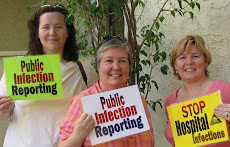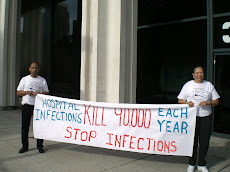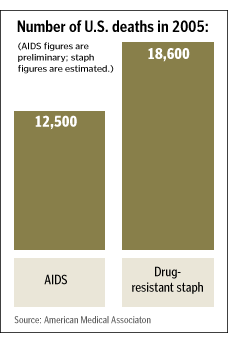No hospitals named in tales of infection
Report on diseases acquired during medical procedures keeps institutions anonymous
By CATHLEEN F. CROWLEY, Staff writer First published: Wednesday, July 9, 2008
ALBANY -- Three years after a law requiring hospitals to report their infection rates to the state passed, the numbers have been released -- sort of.
The hospital-by-hospital rates for 2007 will not be fully disclosed. Instead, New Yorkers can see aggregate rates, an interim step negotiated by the hospital industry when the law was enacted in 2005.
"The promise that was made to (the hospital community) was we will do this right," said Assemblyman Richard Gottfried, chairman of the Assembly Health Committee, "to make sure it's running right before we take it public. That was an important promise and a smart promise."
The hospital-specific numbers will be revealed next year and every year thereafter. Meanwhile, the public can view the 2007 hospital-by-hospital rates on the state Department of Health's Web site, http://www.nyhealth.gov, but the names of the hospitals are masked.
According to the federal Centers for Disease Control and Prevention, there were an estimated 1.7 million health care-associated infections nationally and 99,000 deaths from those infections in 2002. Hospital-acquired infections are considered preventable with good hand-washing, equipment sterilization and proper procedures.
Capital Region hospitals refused a request from the Times Union to voluntarily release their infection rates on Tuesday, saying they will follow the state's timeline for unveiling the information.
"It allows us and all hospitals to take a look at the statewide data and compare it to make sure it's accurate and complete and we are all comparing apples to apples," said Brad Sexauer, Saratoga Hospital's vice president of strategy and marketing development.
Arthur Levin, director of the Center for Medical Consumers and a member of the state's advisory board for the reporting system, defended the anonymity granted to hospitals this year.
Levin said it will assure that the data is accurate, and next year, "hospitals will have no excuses."
According to the aggregate figures released Tuesday, New York's infection rates mirror the nation's. For every 100 people who undergo colon surgery, about six get an infection, according to the report. For people who have a coronary bypass graft, 3.6 out of every 100 get an infection. Fewer than 1 percent develop infections related to central lines, which are tubes that snake through a vein to the heart to deliver medicine and monitor heart function.
Of all reported infections, about 10 percent were caused by methicillin-resistant Staphylococcus aureus or MRSA. The rest were caused by organisms that respond more easily to antibiotics.
Betsy McCaughey, the former New York lieutenant governor who has since founded the Committee to Reduce Infection Deaths, said the report has many shortcomings -- most notably the comparison to national rates.
"The only infection rate that is acceptable is zero," McCaughey said.
McCaughey criticized the report for highlighting risk factors for infections, like gender and obesity, without exploring the most important contributors: unclean hospitals and lax procedures.
Subscribe to:
Post Comments (Atom)









No comments:
Post a Comment